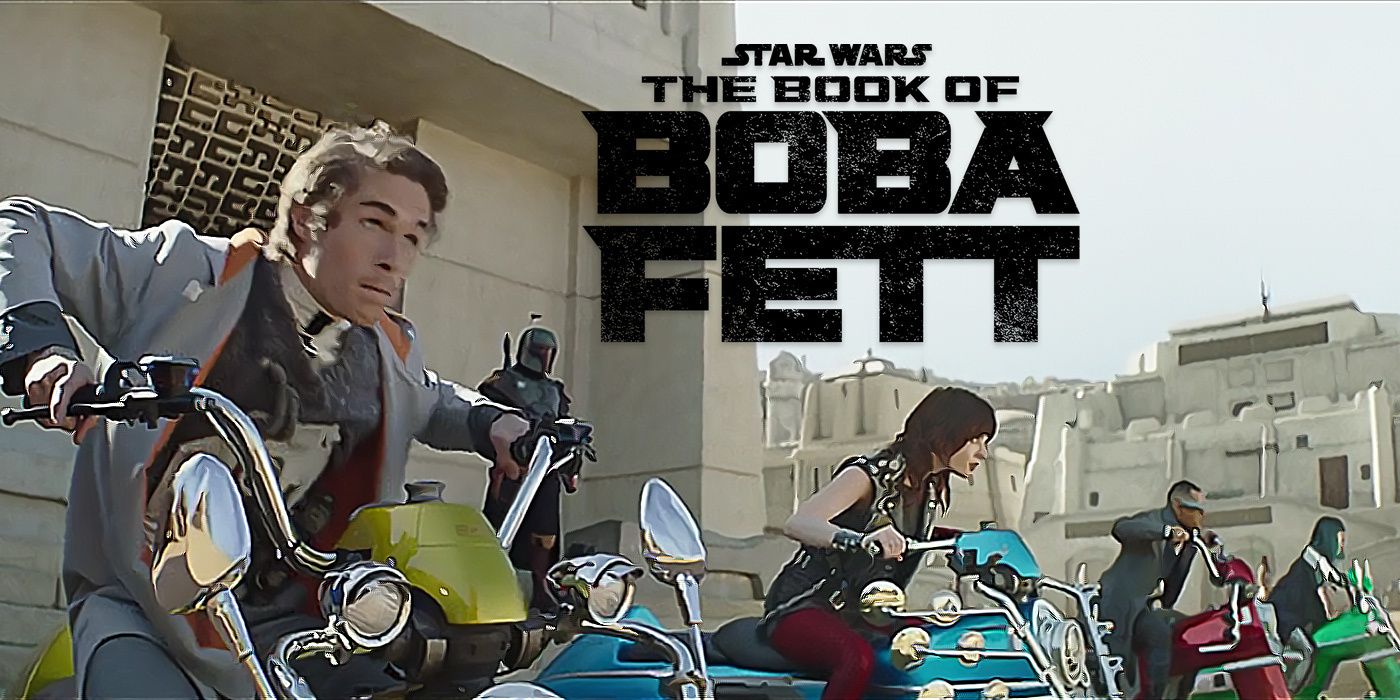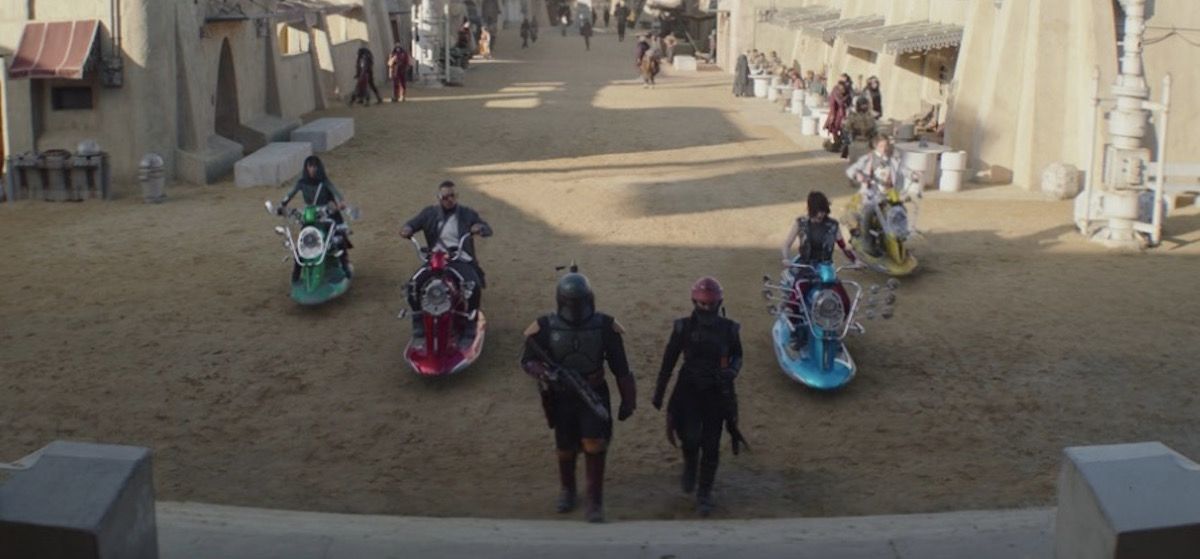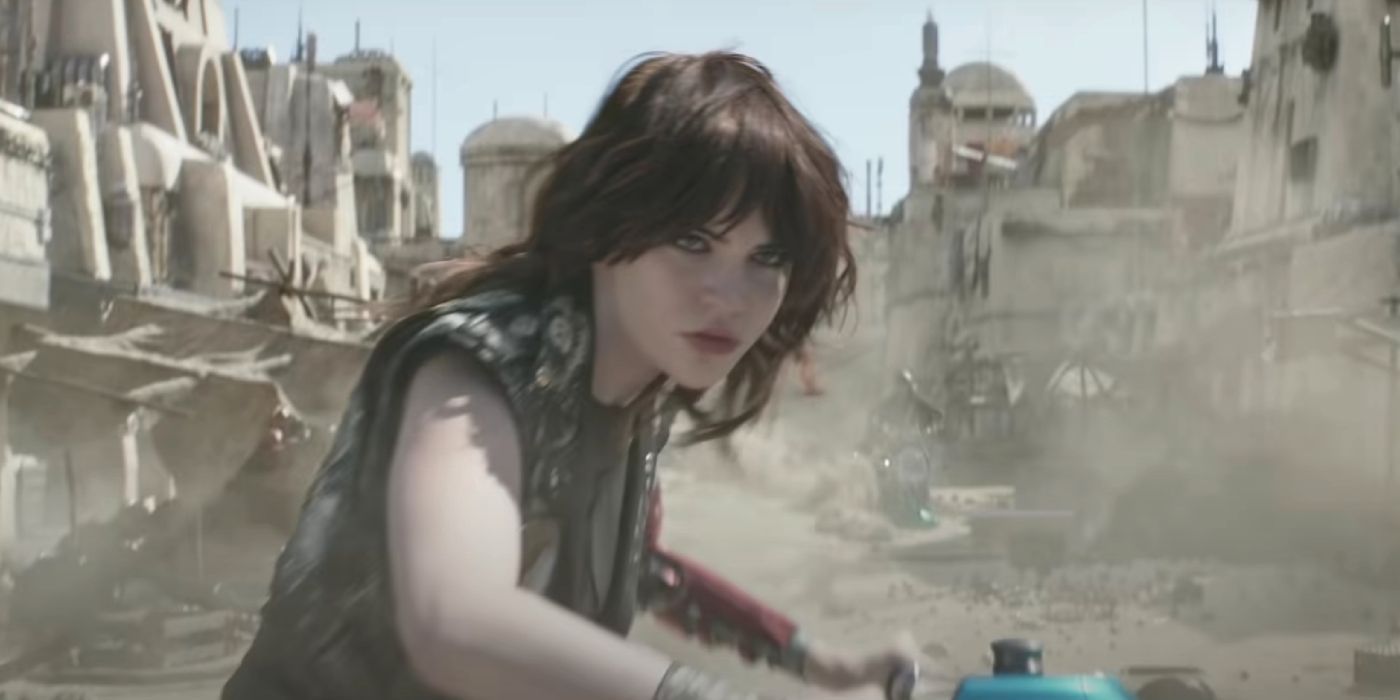There isn't a more obnoxious concept attached to the ass of pop culture today than the idea that Star Wars has a definition. "I think this Star Wars thing is trash and here's why" is a valid opinion, agree or disagree. "This Star Wars thing isn't Star Wars," a bugaboo that crawls out of its Dagobah swamp-hole every time the series attempts to do something just a little different, is not only flimsy gate-keeping nonsense, it's also antithetical to what the franchise is. Since 1977, the allure of Star Wars has been the tantalizing promise "something a little different" is just a jump to hyperspace away, that George Lucas and every creator who followed is playing in a universe so inconceivably vast that every single color, size, aesthetic, landscape, and architecture is possible, as long as you find the right spice smuggler or junk herder to get you there. Star Wars isn't a checklist, it's endless possibility. Star Wars is a toy box with no bottom, a creative mind's dream, and it somehow got saddled with a conversation that wants it squeezed to death by the most restrictive terms possible. All of this is to say: The third episode of The Book of Boba Fett, "The Streets of Mos Espa" directed by Robert Rodriguez and written by Jon Favreau, introduced a tech-enhanced gang of Tatooine street toughs riding candy-colored speeder bikes, a futuristic riff on 1950s greaser gangs by way of Rodriguez's own Spy Kids and Power Rangers-ish tokusatsu. Put more simply: These characters—led by Sophie Thatcher, having one hell of a year—whip ass. Put more importantly: They felt nothing like Star Wars, which is to say they felt exactly like Star Wars.
Again, if you thought the Mos Espa crew looked like toys your least-cool aunt would put in an Easter basket, that's, uh, that's actually pretty fair. But even an aesthetic swing and a miss is a vital addition to what makes Star Wars great. From the beginning, I'd hoped the live-action Disney+ shows would be a chance to play around with the established Star Wars aesthetic; new worlds, ideally, but at the minimum a few planets that aren't covered in sand. The results have been...mixed on that front, but by and large, every new pinch of spice has been a net positive to the flavor. The Mandalorian works best when it's less a cameo parade and more focused on its unique father-son story between a tiny Force-sensitive nugget and a bounty hunter trying his absolute hardest to not be part of a Star Wars story. This push-pull between the familiar and the inventive is embodied by the moment Luke dang Skywalker showed up in The Mandalorian's season 2 finally and his presence was arguably less emotionally impactful than the fact he was separating Baby Yoda from Din Djarin (Pedro Pascal).
By design, The Book of Boba Fett is less interested in telling an unfamiliar story; its main goal is filling in the blanks for a character we already know, explaining how Boba Fett (Temuera Morrison) went from a gigantic doofus who got whacked into a death-hole by a blind man to a badass crime lord with a good boi Rancor in his basement. And it's doing so on Tatooine, a planet we've been to countless times, while sticking closely to Star Wars' well-worn palette of "sandy beige." Which is why those damn neon speeder bikes, looking like Lisa Frank sponsored an Easy Rider remake, felt like such a refreshing surprise. It's a shocking pop of color crashing into the setting we know so well, the type of sudden, unexplained visual creativity that makes Star Wars feel alive. The spirit of the franchise's most wildly eclectic scenes is alive and well in this goofy-ass gang. The species-spanning line-up at the Boonta Eva Classic Podrace in The Phantom Menace. The clientele at the Mos Eisley Cantina in A New Hope ranging from charismatic scoundrels to literal Satan. That little drunkard goblin who keeps shoving coins into BB-8 during The Last Jedi. Star Wars expands its myths by showing you slivers of its universe that invite roughly one-thousand unanswered questions.
I've been consistently bummed that the current era of Star Wars seems focused on answering as many of those questions as possible, and more so over the demand these answers make perfect, logical sense. There is a critique to be made about the logic behind this Mos Espa being both poor enough to be stealing water while still modifying their bodies with droid tech and riding around on shined-up sand-free speeder bikes. My rebuttal, put as gently as humanly possible, is this: Who gives a shit? Truly, deeply, sincerely, who gives a shit? Sanding down Star Wars' unrealistic edges is a fool's errand. It's a sprint directly into the side of a brick wall. The list of things equally if not more unrealistic than "a gang of street toughs who polish their motorcycles" in Star Wars stretches from Batuu to Bespin. A military capable of space flight using a vehicle that walks on two janky legs like a drunken ostrich. Space stations the size of a planet you can walk across. The...Force? The whole Force. All of these things are stupid and unrealistic and wonderful. Something that's unrealistic about Star Wars is Star Wars. Something beautiful about the word "unrealistic" is it doesn't have to be negative.
No matter what the future holds for Star Wars, I hope there'll be room for these weird, wonky flourishes. You can hate them, you can love them, and the only way to be "wrong" is to say you're "right" according to what Star Wars is or isn't. It was a long time ago, man. In a galaxy far, far away. We don't know. We're still discovering new corners of this universe and, hopefully, always will be.



